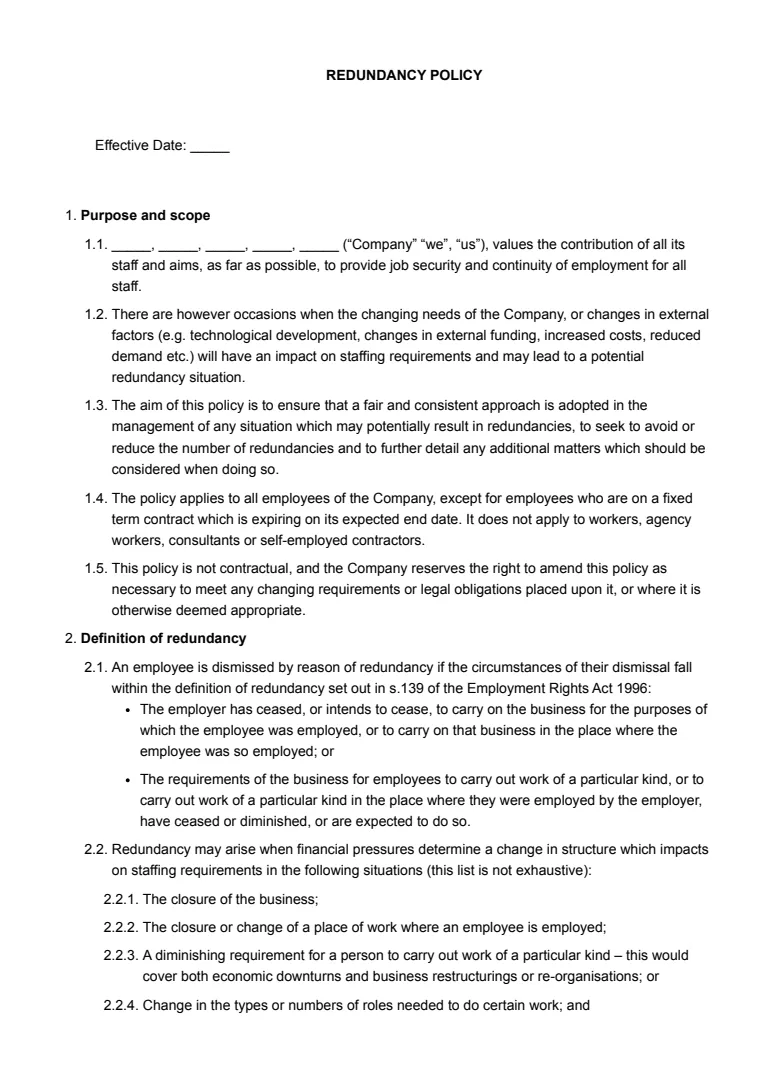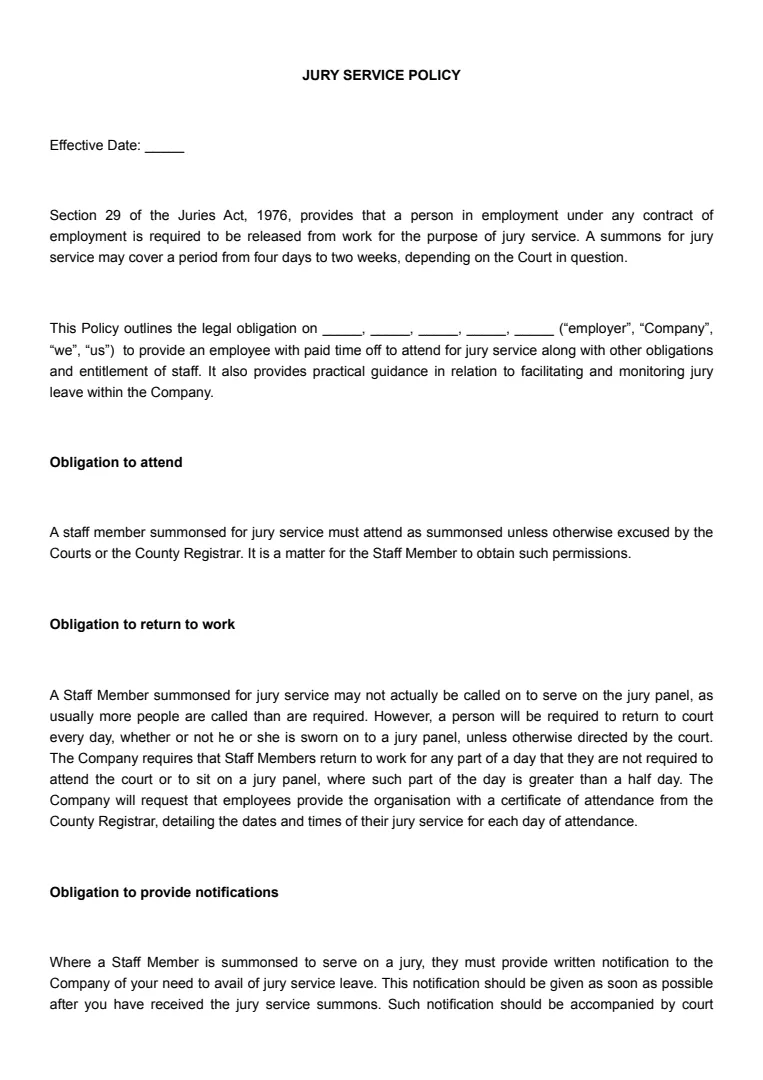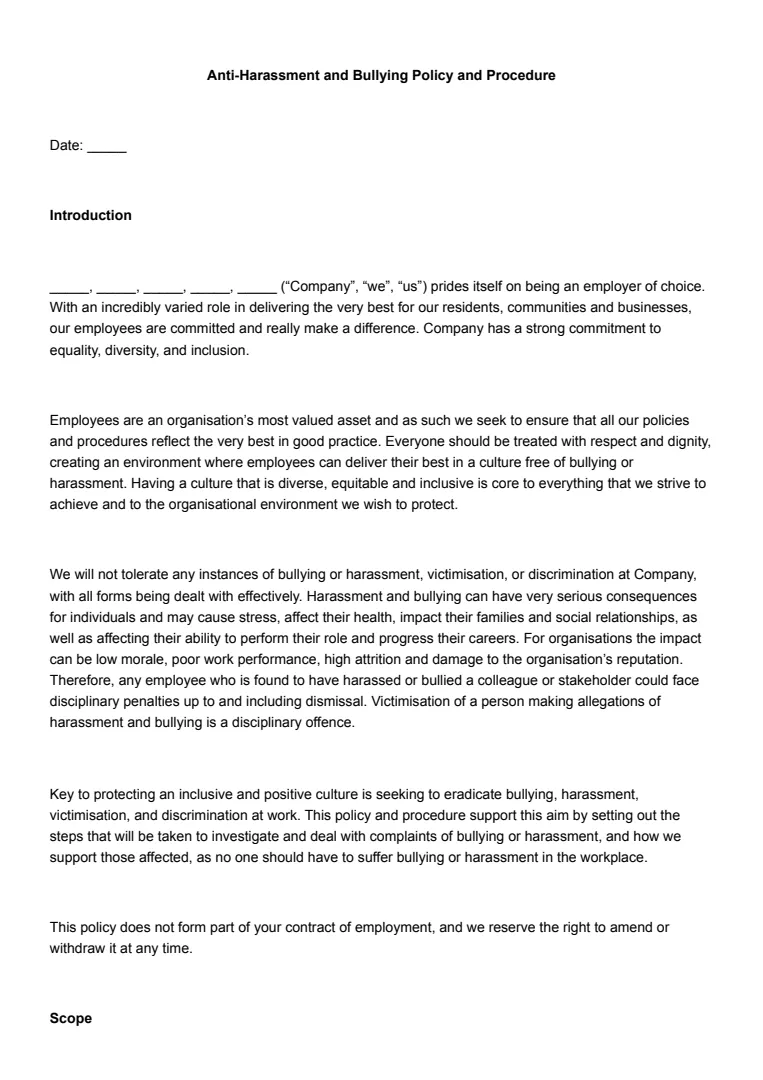What Is a Redundancy Policy?
A redundancy policy is your company's formal guideline for managing situations when job roles are eliminated.
It’s crucial to ensure that affected employees are treated fairly and with transparency.
Key elements usually found in a redundancy policy include:
- Consultation: Employees should be informed and consulted before decisions are finalised.
- Selection Criteria: Clearly defined criteria for selecting which roles will be made redundant.
- Redeployment: Opportunities for affected employees to be redeployed to other roles.
This policy is often used to handle redundancies due to changes in business needs, such as restructuring or financial challenges. It helps minimise confusion and potential legal issues by outlining the steps that need to be taken.
The purpose is to provide clarity and support to both employers and employees during what can be a difficult time.
Fairness and transparency are essential, and a well-structured redundancy policy reflects these values.
Redundancy policies typically explain the rights and obligations of both the employer and the employee.
They often cover aspects like notice periods and possible redundancy pay, ensuring that both parties understand what to expect. Having a comprehensive redundancy policy in place can guide you through the process effectively.
When Is a Redundancy Policy Needed?
A redundancy policy is crucial when you're thinking about adjustments in your workforce due to various operational changes.
If your business is facing a downturn with reduced demand for goods or services, you might have more staff than work available. This can be a primary trigger for needing a redundancy policy.
When you're planning to close a business or part of it, it's time to consider a redundancy policy. This is important to ensure that you manage employee rights and transitions effectively.
Maybe you're going through a technological upgrade, where new tech replaces certain roles. When jobs are automated, some positions might no longer be needed. This would require the creation and implementation of a redundancy policy.
Examples of when a redundancy policy might be necessary:
- Business restructuring: You might restructure your organisation to improve efficiency.
- Mergers or acquisitions: These often lead to overlapping roles and potential redundancies.
- Budget cuts: Sometimes, financial constraints mean you have to reduce staffing levels.
Having a solid redundancy policy helps you navigate these situations smoothly, ensuring that legal requirements are met and that affected employees are treated fairly and transparently.
How to Write a Redundancy Policy
When you're drafting a redundancy policy, it's important to keep both legal obligations and employees' welfare in mind.
You'll want to take it step by step, ensuring you cover all essential elements to create a comprehensive document. You can use a redundancy template to help you.
Step 1: Purpose Statement
Start by outlining the purpose of the policy.
Explain why a redundancy policy is necessary, highlighting its aim to address situations where reducing staff is unavoidable.
Make sure to mention the goal of conducting redundancies fairly and ethically.
Step 2: Scope of the Policy
Define who the policy applies to within your organisation.
You should clearly specify the job positions, departments, or employment types that may be subject to the redundancy process.
Step 3: Legal Compliance
Incorporating legal requirements is crucial.
You'll need to research and include relevant labor laws and regulations applicable in your region.
These govern the fair treatment of affected employees and ensure that you fulfill your legal duties.
Step 4: Redundancy Criteria
You'll need to establish clear criteria for making redundancy decisions.
Consider factors such as performance, skills, and business needs.
Be transparent about how these criteria will be applied consistently to avoid any discrimination claims.
Step 5: Process Description
Lay out the steps that will be followed once a redundancy situation is identified.
Include details on consultation, notification, and selection processes.
Clearly outline how you'll engage with employees and any support you'll provide during the process.
Step 6: Support and Assistance
Describe the support mechanism you’ll offer to affected employees.
This might include counseling, job search assistance, or retraining opportunities.
Highlight how you'll support them through these transitions.













